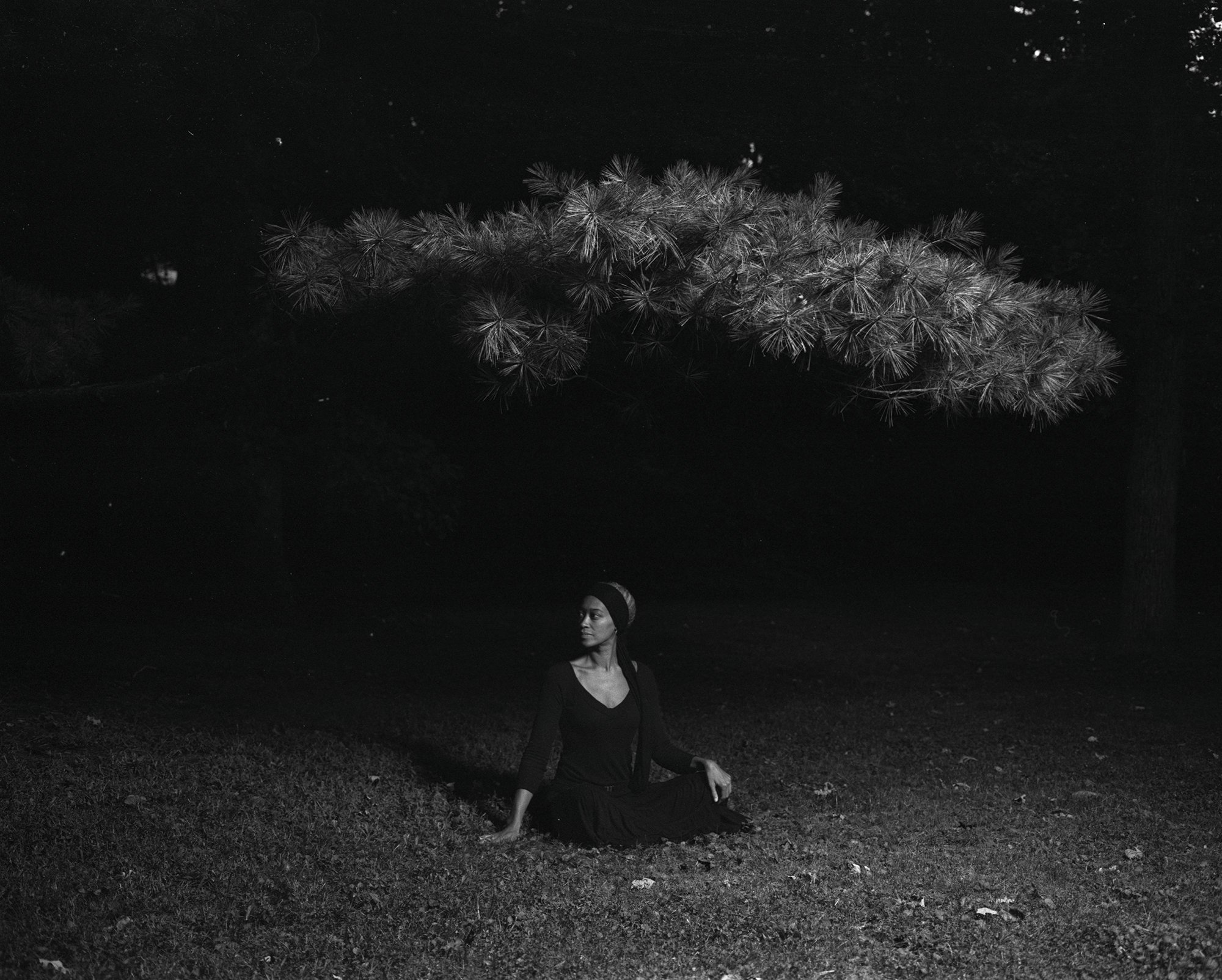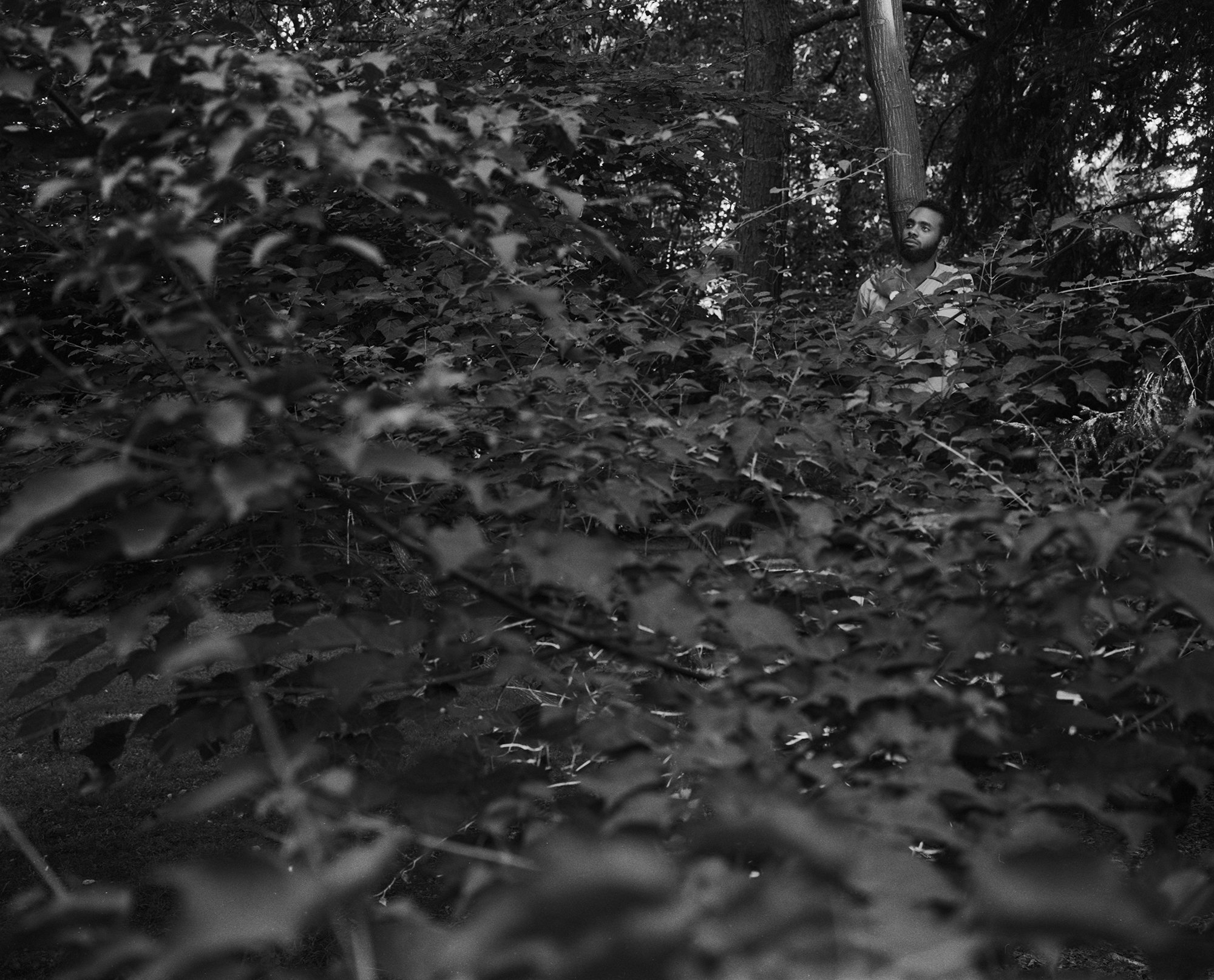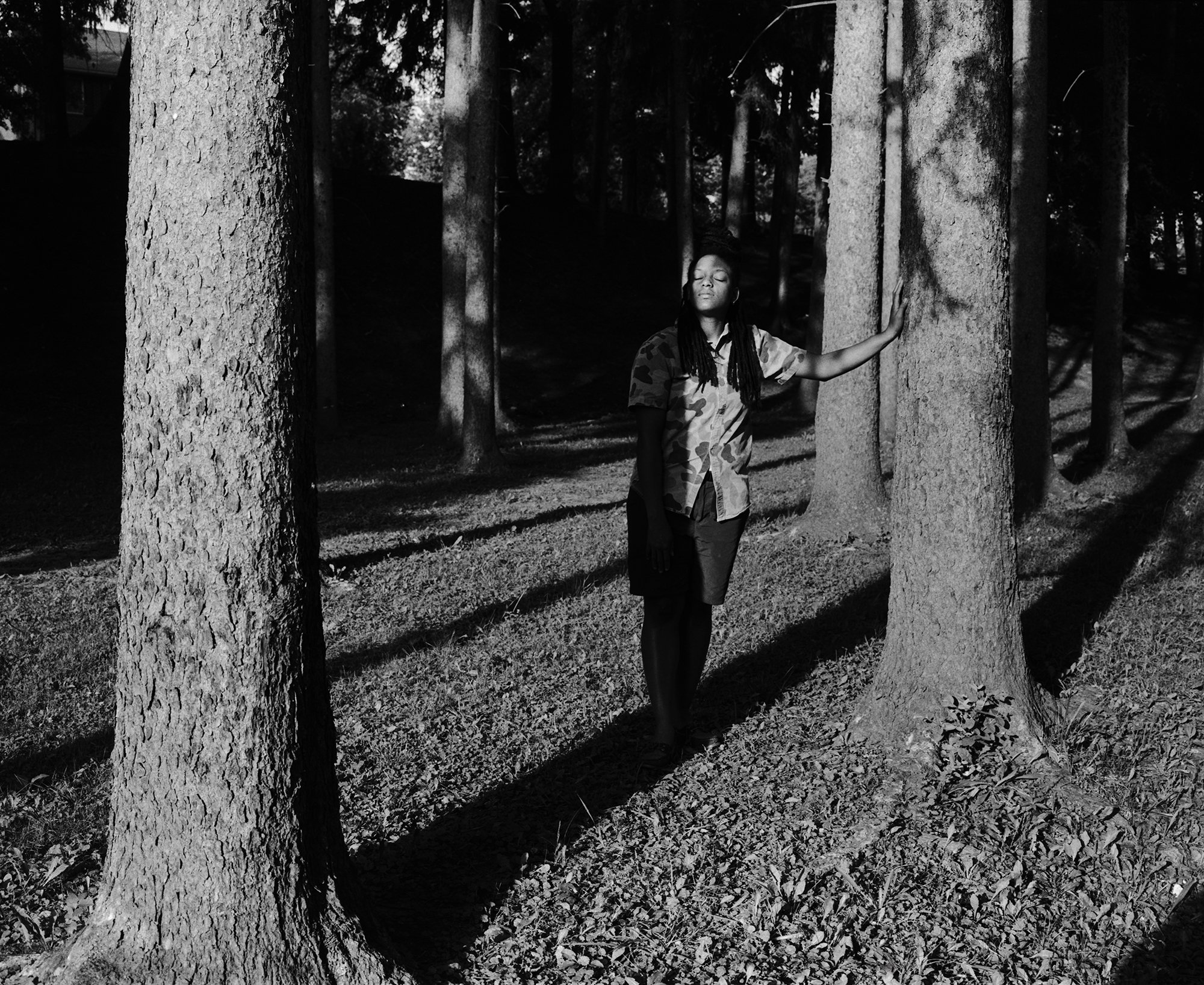Raymond Thompson Jr.-Imaging / Imagining
Deconstructing colonial optics of African Americans is the first step in building an "oppositional black aesthetic." It can be a place where the imaged self and the imagined self are given space to breathe within the American landscape.
Imaging / Imagining
Raymond Thompson Jr.
Imaging / Imagining examines the relationship between African Americans and nature. America's social and cultural history of slavery, Jim Crow and mass incarcerations have ignored and demonized black connections to the natural environment.
The Tree as a powerful cultural symbol in American memory has dual meanings. One meaning lays deep in the heart of America's cultural identity, which is preserved in our vast conserved natural spaces. The other meaning lies at the heart of white supremacy and the historical memory of lynching.
These acts of racial terrorism not only served to reinforce white supremacy as the dominant social order in the Jim Crow south, but it did something more. For African Americans, these acts of violence became a warning that the woods, the trees, and the rivers represented sites of potential racial violence.
Deconstructing colonial optics of African Americans is the first step in building an "oppositional black aesthetic." It can be a place where the imaged self and the imagined self are given space to breathe within the American landscape. These are meant to be the antitheses of the shared historical memory.
“A tree became a painful symbol for many black people, reminding them that the color of their skin could mean death. Arguably, lynching succeeded in limiting the environmental imagination of black people whose legitimate fear of the woods served as a painful and very specific reminder that there are many places a black person should not go.”
- Carolyn Finney, Black Faces, White Space
Raymond Thompson Jr., Elissa
Being still in the company of trees brings me joy unlike any other experience in this life. When I step away from the noise of the world and listen to the animals and the leaves and the birds and the bees… to the wind and the sky and the rain and the sun’s light, I learn more about myself and the interconnectedness of All Things. Everything I know to be true, I learned from the landscape. Everything.
- Elissa
Raymond Thompson Jr., Eva
Raymond Thompson Jr., Keelan
When I’m in the woods, I feel afraid. The silence, the depth, and the loneliness makes me feel as if I’m not supposed to be there or that I don’t have a chance to survive.
- Tegan
Raymond Thompson Jr., Tegan
Raymond Thompson Jr., Mckenzie
Being in the woods made me feel at peace. It is the type of atmosphere that makes you slow down and acknowledge its beauty. As a kids that was one of many places that I could make my own. Not having a care in the world, except to make sure my butt was home before the streetlights came on. Being able to reminisce on those childhood feelings, now that was beautiful.
- Ihanna
Raymond Thompson Jr., Ihanna
Raymond Thompson Jr.,Thomas
Daivari
"I feel happy. I feel in touch with nature. I feel like a king."
-Davari
Raymond Thompson Jr, is an artist, educator and visual journalist based in Austin, TX. He currently works as an Assistant Professor of Photojournalism at University of Texas at Austin. He has received a MFA in Photography from West Virginia University and a MA in Journalism from the University of Texas at Austin. He also graduated from the University of Mary Washington with a BA in American Studies. He has worked as a freelance photographer for The New York Times, The Intercept, NBC News, NPR, Politico, Propublica, The Nature Conservancy, ACLU, WBEZ, Google, Merrell and the Associated Press.











